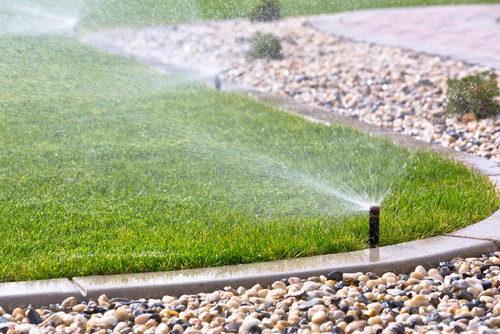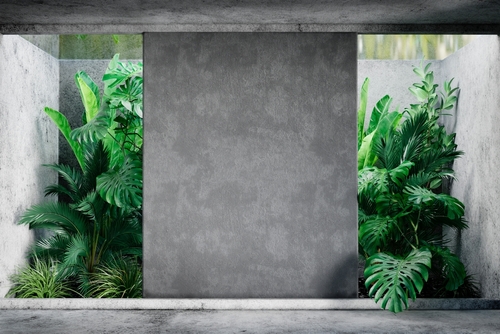
Importance of Soil Testing: Improving Garden Health
November 1, 2023
Lawn Care for Beginners: Essential Tips for New Homeowners
January 1, 2024Watering and Irrigation for a Healthy Landscape

Watering and Irrigation for a Healthy Landscape
Watering and Irrigation for a Healthy Landscape. Singapore’s vibrant and healthy landscape relies heavily on proper watering and irrigation.
This comprehensive guide will delve into the significance of watering and irrigation and explore practical tips tailored to Singapore’s unique climate.
Proper watering is the lifeblood of a thriving landscape. It ensures that your plants receive the hydration they need to grow, bloom, and withstand the challenges of Singapore’s climate.
Adequate and efficient watering practices promote the health and vitality of your landscape and contribute to the overall sustainability of water resources.
Navigating landscape care in Singapore is a nuanced endeavor. High temperatures, high humidity, and frequent rainfall characterize the city-state’s climate.
These environmental factors create both opportunities and challenges for landscape maintenance. Read on.
Understanding Landscape Watering
Water plays a fundamental role in maintaining the health and vibrancy of your landscape. It is a carrier of essential nutrients, facilitating their uptake by plants’ root systems.
Additionally, water is a key component of photosynthesis, enabling plants to produce energy and thrive. Therefore, ensuring an adequate and consistent water supply is paramount to nurturing a flourishing landscape.
Different landscapes require different irrigation methods. In Singapore, where water conservation is not just a recommendation but a civic duty, understanding the available options is crucial.
Common irrigation methods include drip irrigation, soaker hoses, and sprinklers. Each method has advantages and suitability depending on plant type, soil conditions, and water availability.
Watering Techniques

Frequency and Timing
In Singapore’s tropical climate, timing and frequency are critical factors in effective watering. Given the frequent rainfall, it’s essential to synchronize your watering schedule to avoid overwatering.
Watering during the cooler parts of the day, such as early morning or late evening, can minimize water loss due to evaporation.
Adopting a deep watering approach also encourages root growth and resilience in your plants.
Watering Methods
The choice of watering method can significantly impact water efficiency. Drip irrigation systems, for instance, deliver water directly to the root zones of plants, reducing wastage from surface runoff.
Soaker hoses can provide even moisture distribution, particularly in densely planted areas, while sprinklers are suitable for large open spaces.
Careful consideration of your landscape’s layout and plant types will guide you in selecting the most appropriate watering method.
Avoiding Overwatering
Overwatering wastes valuable water resources and can harm your plants by promoting root rot and fungal diseases.
Monitoring soil moisture levels and using tools such as moisture meters can help gauge when to water. Implementing a mulching strategy can also help regulate soil moisture, reducing the need for frequent watering.
Water Conservation in Singapore
Water conservation is a core aspect of responsible landscaping in Singapore. As a water-scarce nation, the preservation of this precious resource is paramount.
Beyond the immediate benefits of reducing water bills, conscientious water conservation contributes to the nation’s broader sustainability efforts, ensuring a secure water supply for future generations.
Singapore has been at the forefront of water conservation and management. Aligning your landscape practices with these efforts conserves water and contributes to the nation’s sustainability goals.
Implementing water-saving practices in your landscape care routine is both responsible and practical.
Some effective strategies include using native and drought-tolerant plants that require less water, installing rain barrels or tanks to collect rainwater for irrigation, and regularly checking for leaks in your irrigation system.
Dealing with Rainfall

Leveraging Rainwater
In a climate characterized by frequent rainfall, rainwater can be a valuable resource for irrigation.
Installing rain barrels or tanks to collect rainwater from your roof’s downspouts allows you to harness this resource efficiently.
The collected rainwater can supplement your landscape’s watering needs, reducing reliance on municipal water supplies.
Managing Excessive Rainfall
While rainfall is a blessing, excessive rain can pose challenges. Heavy rains can lead to waterlogging, erosion, and plant damage.
Proper grading, drainage systems, and rain gardens can help manage excess rainfall and prevent these issues, ensuring your landscape remains healthy even during the wettest periods.
Irrigation System Maintenance
Regular System Inspections
Maintaining your irrigation system is vital to its efficient operation. Regular inspections should encompass checking for clogs, leaks, and proper nozzle alignment.
Ensuring that your irrigation system functions optimally conserves water and extends the equipment’s lifespan.
Detecting and Fixing Leaks
Leaks in your irrigation system can lead to significant water wastage. Inspecting your system and promptly addressing any leaks or damaged components is essential.
It prevents resource loss and reduces the risk of landscape damage caused by excessive watering.
Upgrading for Efficiency
Consider upgrading your irrigation system to improve water efficiency. Weather-based controllers, soil moisture sensors, and low-flow nozzles can enhance your system’s precision and effectiveness.
While there may be an initial investment, the long-term water savings and improved landscape health often justify the cost.
Landscaping for Water Efficiency

Drought-Tolerant Plant Selection
Choosing drought-tolerant plant species can significantly reduce your landscape’s water requirements.
These plants have adapted to thrive with less water, making them well-suited to Singapore’s climate.
Incorporating native species in your landscape design is also a sustainable choice, as they are naturally adapted to the local environment.
Mulching and Soil Preparation
Mulching serves as a valuable tool in water retention. Applying mulch to your landscape beds helps regulate soil temperature, reduce evaporation, and suppress weed growth.
Investing in soil preparation, such as amending soil with organic matter, improves its water-holding capacity, benefiting your plants’ overall health.
Shade and Windbreaks
Creating natural elements within your landscape, such as shade trees and windbreaks, contributes to water conservation.
These features provide comfort and reduce water evaporation from the soil. Strategically positioning shade trees and windbreaks can help maintain soil moisture levels and decrease the need for frequent watering.
Frequently Asked Questions
How often should I water my plants in Singapore’s climate, and how can I determine the right frequency?
Watering frequency depends on plant type, soil type, and weather conditions. To determine the right frequency, monitor soil moisture levels and adjust your watering schedule accordingly.
Watering deeply is generally advisable but less frequently to encourage deep-root growth.
What are the advantages of drip irrigation, and why is it often recommended for water-efficient landscaping in Singapore?
Drip irrigation is a water-efficient method that delivers water directly to the root zones of plants, minimizing wastage from surface runoff and evaporation.
It is particularly recommended for Singapore’s landscapes as it conserves water while ensuring plants receive adequate hydration.
Can you recommend drought-tolerant plants that thrive in Singapore’s climate?
Certainly! Some drought-tolerant plant options suitable for Singapore’s climate include Bougainvillea, Plumeria, Agave, and Bird of Paradise. These plants are well-adapted to Singapore’s high temperatures and periodic dry spells.
How can I create effective shade and windbreaks in my landscape to conserve water and enhance comfort?
To create shade and windbreaks, strategically plant trees and shrubs in areas where they can provide coverage to sensitive plants and reduce water evaporation.
Proper placement and species selection are key to maximizing their effectiveness in conserving water and improving comfort in your landscape.
Watering and Irrigation for a Healthy Landscape – Conclusion

Maintaining a lush and water-efficient landscape in Singapore is achievable with smart watering and irrigation practices.
By understanding the role of water, conserving resources, and making thoughtful choices, you can enjoy a thriving outdoor space that enhances the beauty of your surroundings while contributing to Singapore’s sustainability efforts.
Are you seeking professional and reliable landscaping maintenance or contractors in Singapore? Contact us today!



